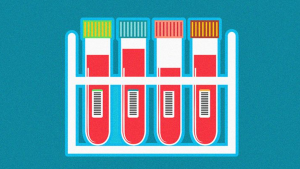
Diabetes is a chronic disease that affects millions of people worldwide. The early detection of diabetes is crucial to preventing the development of serious complications. However, traditional methods of diabetes detection are often inaccurate and invasive. Machine learning / AI offers a promising solution for the early detection of diabetes. Machine learning algorithms can automatically detect patterns in data and use those patterns to make predictions. Machine learning is well suited for the detection of diabetes because it can handle the large amount of data required for accurate predictions. In addition, machine learning algorithms can automatically identify patterns that are too subtle for humans to discern.
Quick Overview on Machine Learning
Machine learning is used for a set of algorithms and technologies which can be used to make predictions such as numeric prediction (numbers) or classifications by learning patterns from historical dataset. Machine learning algorithms can automatically detect patterns in data and use those patterns to make predictions. You can learn a lot about different concepts of machine learning in this post – What is Machine Learning? Concepts & Examples.
There are two main types of machine learning: supervised and unsupervised. Supervised learning algorithms are given a set of training data that includes known examples of what they need to learn. In other words, training data consists of value for target variable which needs to be predicted. For example, if we want a supervised learning algorithm to learn how to recognize cats, we would give it a dataset of pictures that includes both cats and non-cats. The algorithm would then learn to identify cats by looking for patterns in the data that are associated with cat pictures. In recent years, machine learning has been used to detect diabetes through analyzing images of the retina. In particular, convolutional neural networks (CNNs) have been shown to be effective at detecting early signs of diabetes.
Unsupervised learning algorithms are not given training data with labels; instead, they learn by looking for patterns in data on their own. For example, an unsupervised learning algorithm might be given a dataset of pictures and asked to group them into different categories. The algorithm would then have to learn how to group the pictures by finding patterns in the data.
Overview on Diabetes & Why use Machine Learning?
Diabetes is a serious health condition that affects millions of people around the world. Glucose levels that are too high can cause a range of health problems, including heart disease, kidney damage, and blindness. The most common form of diabetes, type 2 diabetes, is caused by a combination of genetics and lifestyle factors. Early diagnosis and treatment of diabetes is essential to prevent serious complications, yet current screening methods are often cumbersome and expensive.
Traditionally, diabetes has been diagnosed using a blood test called fasting plasma glucose (FPG). However, this test is not always accurate, and false negatives are common. As a result, many people with diabetes remain undiagnosed until they develop serious health problems.
In recent years, machine learning has emerged as a powerful tool for detecting and diagnosing diseases. One area where machine learning is particularly well suited is diabetes detection. The reason for this is that machine learning can handle large amounts of data more effectively than traditional methods. Machine learning offers a promising solution for early detection of diabetes. By using data from blood tests, machine learning algorithms can be trained to detect the signs of diabetes with high accuracy. Machine learning algorithms can be trained to accurately predict an individual’s risk of developing diabetes, based on a variety of factors such as age, weight, and family history. This information can then be used to help make decisions about lifestyle choices or medical interventions.
Machine learning can be used to develop new Diabetes treatments. For example, by analyzing large datasets of patient information, machine learning algorithms can identify patterns that may lead to more effective treatments.
Diabetes Detection using Retinal Images & CNN
In recent years, machine learning has been used to detect diabetes through analyzing images of the retina. In particular, convolutional neural networks (CNNs), a deep learning algorithm, have been shown to be effective at detecting early signs of diabetes. CNNs are designed to recognize patterns in data. In the context of detecting diabetes, CNNs can be used to identify changes in the blood vessels in the retina that are associated with the disease. These changes can be detected even before the patient exhibits any symptoms of diabetes.
Researchers at Stanford University have developed a supervised machine learning algorithm that can detect diabetes from retinal images with accuracy comparable to that of trained clinicians. The algorithm was trained on a dataset of 128,000 retinal images that were labeled as either normal or abnormal. The researchers then tested the algorithm on a separate dataset of 12,800 retinal images and found that it was able to correctly classify them with an accuracy of 87%.
The researchers also tested an unsupervised machine learning algorithm on the same dataset of 12,800 retinal images. The unsupervised algorithm was able to correctly classify them with an accuracy of 94%. This shows that machine learning can be an effective tool for early detection of diabetes.
Conclusion
Machine learning offers a promising solution for the early detection of diabetes. Machine learning algorithms can automatically detect patterns in data such as blood test reports, retina images, etc and use those patterns to make predictions. Supervised machine learning algorithms require a large amount of training data but are more accurate than unsupervised machine learning algorithms. Unsupervised machine learning algorithms do not require training data but are less accurate than supervised machine learning algorithms.
- Mathematics Topics for Machine Learning Beginners - July 6, 2025
- Questions to Ask When Thinking Like a Product Leader - July 3, 2025
- Three Approaches to Creating AI Agents: Code Examples - June 27, 2025
I found it very helpful. However the differences are not too understandable for me